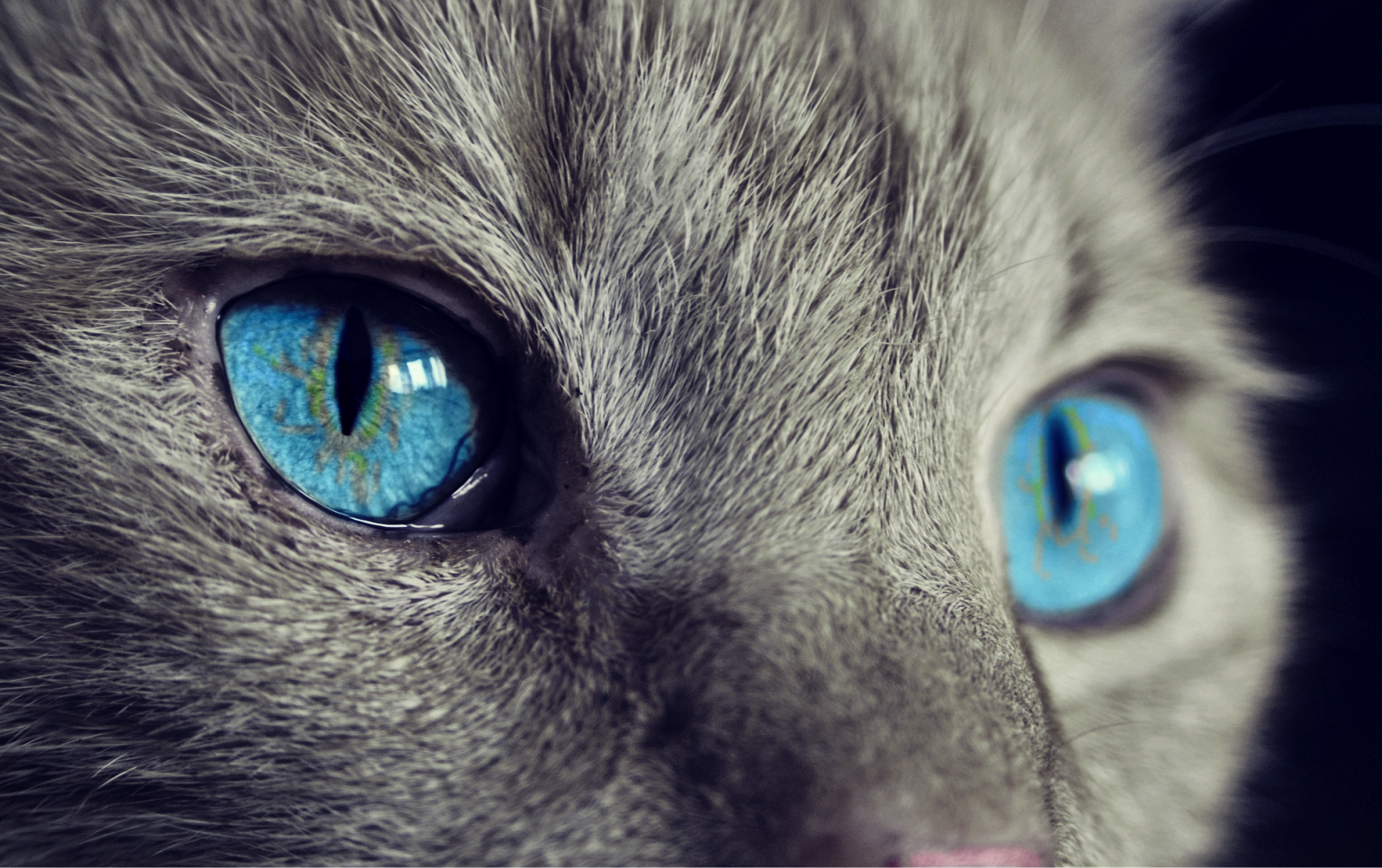Through a Cat’s Eyes

Cat eyes have to be at the top of a long list of endearing cat features. As beautiful as they are, cat eyes do function as a superior visual tool, much more efficient than ours. The unmistakeable vertical shape of cats’ pupils adds to their mystique. It is little wonder we can be taken aback to find a cat intently staring at us. We take a close look at the world through a cat’s eyes.
Vision
The unmatched beauty of a cat’s eyes can mesmerise, but they are particularly powerful where ours fail.
The vertical elongated structure of a cat’s pupils allows them to adjust aperture quickly, adapting to changing light conditions with efficiency. Their pupils are super flexible and can widen almost three times larger than ours, allowing them to see in very low light.
Cats have a remarkable ability to detect and keenly focus on movement, letting other details fade away. Their eye movement is so slick, cats can adjust their eyes to track a fast moving target an astonishing 70 times per second.
Tapetum Lucidum
The light reflection of a cat’s eyes was the inspiration behind the reflective road studs that mark out lanes on our roads. Behind the retina, cat eyes have a layer of retroreflective tissue called the tapetum lucidum. This tissue reflects and hence increases light within the eye. This is what gives cats their amazing ability to see well in low light.

Because cats are crepuscular, they are instinctively more active at dawn and dusk, when their eyes really come into their own. Smaller creatures, such as vermin, are more active at these times as they venture out of hiding. A cat’s superior low-light vision brings them success on the hunt, as well as the occasional present on our doorstep.
Colour
While their vision in low light is hard to beat, the scope of the landscape is limited in the daylight hours. Cats are not colour blind, as it was once thought. But their retinas have less photoreceptors, hindering their perception of colour. They can see different colours, but they are less saturated and defined, and more grey in tone.

Field of Vision
Cats have a 200° field of vision, slightly wider than our 180°. But the differences are more pronounced in depth of vision. Michael Landy, professor of psychology and neural science at New York University, says that as long as there is light, normal human vision is infinite. This is far from the case for cats. Luckily for them, they have no need for distance viewing. Because of their amazing ability to pick up movement, the only things they need to see are within a 6m field of vision. Beyond that, cats see with softer focus.
Cats are not so good at seeing close up, either. Anything within about 20cm is a blur. But a cat’s muzzle whiskers take over at close range. These highly sensitive receptors communicate the exact location of proximate objects. Read more about this remarkable feature in All About Cat Whiskers.
Third Eyelid and Blinking
It isn’t normally visible, so this may come as a shock. Cats possess a third eyelid, otherwise known as the nictitating membrane. In fact, almost all vertebrates have a third eyelid of some form. It exists to protect the eyes from low lying scrub. And because blinking isn’t conducive to hunting, the third eyelid cleans and moistens the eyes, all but eliminating the need to blink – which only adds to the mystery of the cat, don’t you think?
A visible nictitating membrane in a cat is unusual, and may indicate injury, irritation or infection. They need immediate veterinary care.
Body Language
Body language is telling in the cat world, and eyes are a significant cat communication tool. When a cat is in a relaxed, friendly state, notice their eyes. The eyelids are marginally open, if at all. When a cat is hyper alert – upon detection of movement or perceived danger – their eyes are wide open. To communicate your love and friendly intentions, follow suit: narrow your eyes and blink slowly.
Staring
You glance over at your cat and find they’re giving you a long, hard stare. You double take, and wonder why they are silently eyeballing you. Are they judging you, or planning an attack?
In a staring competition, a cat would win. Not that many of us would enter into such a reckless game. Some of us are too fearful, others know they would lose. And some know that although cats can stare at us, they do not like to be stared at.
Cats stare at their guardians for a few reasons. If you are within their hunting precinct – the room – they are keeping tabs on your activity, zoning in on your every move. They may also stare to assert dominance over their territory.
But more than likely, your cat is staring at you out of affection and a desire for your attention. Far from being the fluffy stuff of fairy tails and love songs, their affection is borne out of loyalty to their family – that includes you. Cats aren’t silly; it is in their best interests to know where you are, the giver of food, generator of warmth, provider of protection and factory of cuddles.
So the next time you find yourself lost in your cat’s beautiful eyes (with your eyelids narrowed of course), you will have a greater appreciation for how truly remarkable they are. These deep pools of splendour have miraculous seeing power in low light, added protection for the hunt, and the ability to communicate to us without words. And isn’t that what we all crave, to know the thoughts and feelings of our precious feline companions? After all, they surely know how we feel about them.
Resource: Live Science, Images: See the World from a Cat’s Eyes
Article republished with permission from our friends at Ultimates Indulge.
